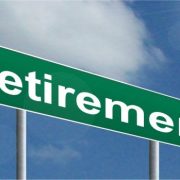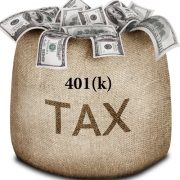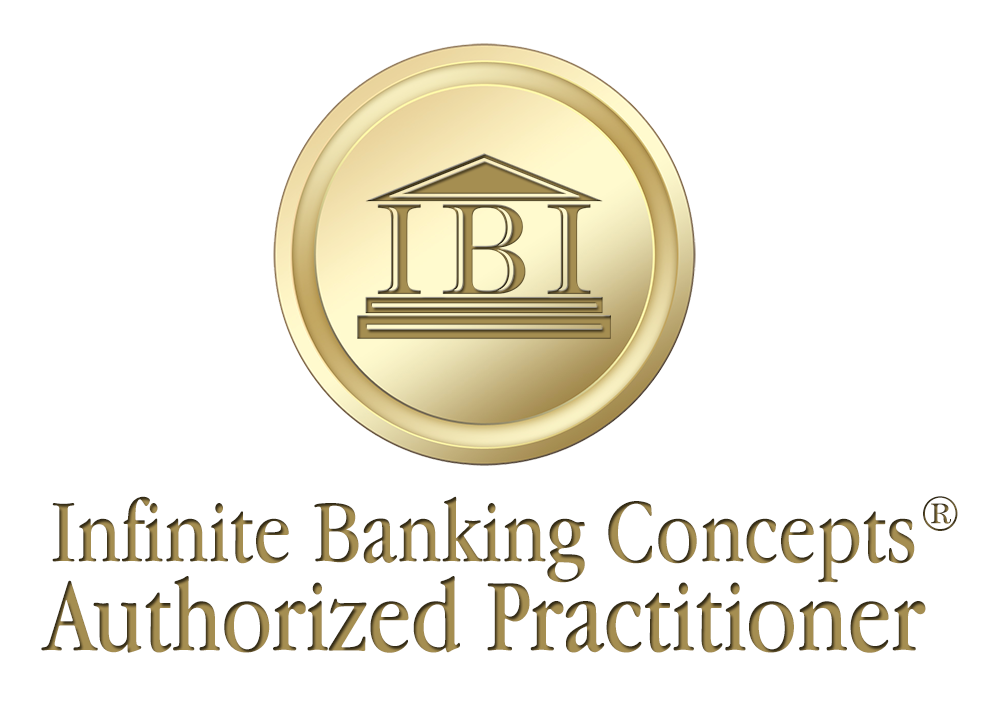401(k)’s: The Truth Behind the Holy Grail of Savings Plans
By Jason I. Henderson, Ph.D.
To suggest that the 401(k) is not a good vehicle for retirement savings takes a fair amount of courage, considering the intensely fractious response such a statement garners from a lengthy list of “expert” financial advisors. Knight Kiplinger for instance, boldly proclaims “It’s time to make the 401(k) mandatory, with every employer offering a plan and both
employer and employee required to contribute.” (Read more here.)
His basic premise holds that everyone who doesn’t properly plan for retirement will be a burden on others. And while I do think it vitally important that people be financially self sufficient, I could NOT be more adamantly opposed to his supposition that any plan should be mandatory, nor that participating in a 401(k) is “properly preparing.”
So let’s check 401(k)’s against our list from the cover article. Aside from the fact that your money is held hostage (no liquidity) in an account that charges penalties for “early withdrawal” and can not be used for collateral to obtain other money if necessary, there are some pretty major misunderstandings about these types of government accounts.
The first baby boomers to retire with 401(k) accounts are now finding out the truth. Most expected to have at least $1,000,000 dollars for retirement after 30 years of contributions. The harsh reality is quite different. The average 401(k) provides only $60,000 at retirement – just barely above one year’s worth of their annual salary, and certainly not enough to live on for 20+ years.
So what happened? Where did all the money go? Why were these well intentioned folks so unprepared for their retirement years despite the fact that
they have been contributing to “savings” accounts for more than 3 decades?
First of all, because 401(k)’s are tied to the market. If you had planned to retire during the last 11 years or so, you undoubtedly understand all too well why this is dangerous. By investing your savings in a 401(k), you are gambling in stocks that “experts” choose for you, banking on those stocks going up in value in order to reach your retirement goals.
Ask anyone you know what happened to the value of their retirement accounts in 2008. I have not yet met a single soul who didn’t lose at least 10% of their TOTAL savings in 401(k)’s that year. Most people lost closer to 40%. Investing in the market is one thing; it should be done with money you can afford to lose, because that is what often happens. When it comes to saving for retirement, you want certainty (guarantees). A 401(k) can never provide that.
The big “carrot” used to entice people to invest in these types of accounts though, is the money saved in taxes. So, let’s assume for the moment, that you start at age 50 and save $5,000 per year until you are 60. We’ll also assume that whatever stocks your fund manager has chosen for you, perform well and you see a long term growth in your account of 6%. (These are just random, but reasonable numbers.) On the day of your retirement party, your account value would be $69,858.21; but how much of that do you get to keep after paying your “deferred” taxes? The answer: $48,900.75.
Did you get that? You have scrimped and saved and put $50,000 in your account, and even gotten a decent rate of return, only to wind up with LESS than you put in. Thank you Uncle Sam. So exactly who is this account supposed to benefit?
To add insult to injury, those numbers don’t include fees – either those advertised, or the hidden ones. Companies such as Fidelity, John Hancock, Nationwide, advertise fees on such accounts to be .1 of 1% of your total investments. That’s negligible, right? A close investigation however, clearly shows that hidden fees are sometimes as much as 3000 times that amount, or 3.5%. This still doesn’t seem like much to worry about, but do the math – fees of only 2% can eat up more than half your account value.
The truth is, 401(k)’s were designed to make money – for the institutions and for the government. And they do make LOTS of it, whether or not YOU do









The kiplinger article link did not work so here it is – http://www.kiplinger.com/article/retirement/T047-C014-S001-401-k-s-for-everyone.html
Thank for pointing this out. The link should be working now.
Hey Jason, Hope things are going well for you. After reading your blog above I was a bit concerned so I sharpened my pencil (excel spreadsheet) and wanted to share what I found.
Your scenario does not take into account the $1,500 tax savings each of the 10 years the $5,000 is contributed to the 401(k). Therefore, your after tax value after cashing out after year 10 would be $63,900. Assuming this $1,500 is invested in a taxable account at the same 6% rate of return there would be an additional $3,941 to add to that balance. Return projections are always debatable but to be fair the S&P 500 has returned 6.99% over the last 10 years which includes the downturn in 2008. My personal mix of mutual funds in a Vanguard retirement account has returned 7.7% over the past 10 years. This is after fees which average about .15%.
I agree there can be place for insurance concepts in a financial plan but I do not think that replacing traditional retirement plans with an insurance only plan is prudent. There is more risk in the equity markets but this risk is mitigated over a long time horizon and thru diversification and over the long term equities outperform fixed income based investments like cash value life insurance. Interested in your thoughts..
Gordon, great to hear from you. I really appreciate you taking the time to check the numbers. As you “sharpened your pencil” you confirmed my asserting that a person would have less in their pocket from their 401(k) once it was liquidated than the total amount they put into the 401(k) for those 10 years. Although I was confident in my numbers, it is nice to have you confirm it.
Your questioning brings up a few additional issues that I did not discuss. First, the immediate tax savings you put at $1,500 dollars a year. You are correct in your numbers if that $1,500 was put into a taxable account earning 6% (Ignoring fees). But here is the issue; how many do you know who actually do that with the $1,500? There are several studies showing people spend all their take home pay instead of further savings. So the additional money people might have is more a phantom than a reality in practice.
Second, you mentioned fees on 401(k)s and mutual funds. This is an area that has received a lot of attention in recent years In particular are the hidden fees associated with them. Yes, the fees mutual funds are required by law to report can be 0.1 to 0.2%. However, the fees they are not required to report can take the total fees up into the 3 to 5% range. Here, are 1,2,3,4,5 Youtube reports by independent people confirming what I am asserting. In my original post I ignored these fees. If I were to take those into consideration the numbers are even worse than what I originally wrote.
Third, you bring up a little secret about mutual funds and how they report returns; average rate of return. We are all aware that a prospectus contains numbers reporting the 1,5,10 and sometimes longer average rate of return for the mutual fund. One thing everyone has to realize that average rate of return does not equal the actual rate of return. Instead of going into it in length here I refer you to another blog post here
Fourth, you want to call investing in 401(k) plans and mutual funds as “traditional retirement plans.” If you want to restrict your thinking to only those years since 1980 or so, then I guess that makes a tradition. The interesting thing is those who completely bought into this “traditional plan” are finding themselves staring at retirement with less than was projected for them when they signed up for the 401(k), IRA or mutual fund. Why is that? As you so astutely point out – taxes and fees – hidden fees. Having said that, I like to look longer term view. The use of defined benefit plans as wealth building/retirement strategy actually existed long before contribution plans (what you’re referring to as “traditional plans”). Many people, both current and from older generations, have used life insurance to ensure their enjoyment of their “golden years,” using plans that were secured and made sound by insurance vehicles that have been around more than 150 years. The use of actuarial tables make the future more predictable and lower the risk of people losing their hard earned savings.
Fifth, you bring up a huge factor when talking about our future; risk. I am not sure if you have had a discussion like I had with a professor here at Utah State who was planning on retiring after the 2008-2009 school year. He had been disciplined, invested his money in mutual funds and what was the result? He was unable to retire in such a way as he had planned because his mutual funds were down hundreds of thousands of dollars. There is a reason for the ancient reasoning embodied in the story of the tortoise and the hare. Yes we can look at mutual funds (hare) under constrained parameters and limited benefits and claim they win, but looked at from a macro point of view there is no comparison. The more years you consider the more likely risk will get you. I cannot find a scenario where the hare wins given all the parameters.
Sixth, we have been conditioned to think by wall street in a way that benefits wall street. Your second to last sentence is a classic example. The math simply does not verify it. Again within limited, tunnel vision, parameters you might could find a place where that is true.
Seventh, you mention that you do not think replacing a traditional plan with an insurance only plan is prudent. I am not saying that investing in anything else is a complete no no. My main concerns are two fold; 1) Most people get the cart before the horse. They have no financial foundation upon which to build lasting family wealth and legacy. People are concerned about chasing a higher rate of return on the 1-5% of their income they are saving while 34-54% of their income is going out the door unknowingly and unnecessarily in the form of taxes and fees. Reducing or eliminating the cost of interest, taxes, and fees has a much greater bearing on wealth building than the rate of return earned on investments. That is my focus; I show people a pathway to prosperity by controlling their financial environment. 2) How you invest makes all the difference. In my opinion, it is of utmost importance that a family’s financial foundation is secured first with low risk, guaranteed earnings prior to investing in stocks and funds that are so volatile and unpredictable. I myself participate in several stocks and funds, but do it with the knowledge that losing those funds will not hinder my ability to retire with a certain lifestyle that I’ve already guaranteed. In the end, impossible to build wealth more efficiently relying on a certain rate of return than with our process. Mathematically provable.
Eighth, in your post seem to narrow in on the product being discussed. Although the product is important, the use of the product or the process is far more important. For example, even if I had the best clubs in the world, Arnold Palmer could beat me every time with a pair of golf clubs he purchased at a garage sale. What one does with these specially designed whole life policies is the main point. The process or pathway is exciting and I love to coach people find and stay on that path.
Again, thank you for your post. I would love to hear more of your thoughts.
Jason, That was quite an essay and I spent more time that I probably should have this this afternoon looking in to many of your interesting points (you probably felt the same way after typing your response:). I plan to respond to all eight points but for now lets start with the first regarding your assertion of a negative after tax return return on a 6% 401(k) investment.
I would respectfully disagree that I confirmed your numbers in any way. While I would agree that the tax savings on a 401(k) may not be invested at 6% or even saved at all, the savings does have to be accounted for when doing a comparison because it is actual money in the 401(k) investor’s pocket. But to make my point more simply, lets say the money is contributed to a Roth IRA which would be after tax money just like a contribution to a life insurance policy. The after tax result of the $50,000 invested over 10 years would be the $69,858. As you are aware there are no deferred taxes owed on a Roth. You get to keep the full $69,858.
You would never convince me that the return on a 6% investment after taxes can somehow come out negative.
Looking forward to your rebuttal…
This is an interesting thread and one in which many useful ideas are suggested. I would like to “think out loud” just a bit though in response to the challenges presented by Gordon Moon because I think there are some significant points to consider that are still missing from this conversation.
1. Gordon states that “the savings do have to be accounted for when doing a comparison because it is actual money in the 401(k) investor’s pocket”. This is not actually correct. When he contributes to his 401(k), he is choosing to reduce his salary by the amount of the contribution. That salary reduction is then placed into the 401(k) where that money and any growth on that money will be taxed in the future when he DOES take that money as income. He has reduced his income by $5000 and yes, assuming the 30% tax bracket, has reduced his income tax liability by $1500. However, that $1500 isn’t “in his pocket” at all. So even if he wanted to he couldn’t take that $1500 and invest it anywhere. If anything, he would have $3500 LESS in his pocket today for having contributed $5000.
2. Gordon then goes on to move the discussion from contributing to a 401(k) to putting that $5000 into a Roth IRA instead. His point being that “you get to keep the full $69,858”. So while he is technically correct, the problem is that he doesn’t account for the taxes he has already paid since contributions to a Roth IRA are “after tax” dollars. So in order to have $5000 to put into a Roth, he has to earn $7,142.85. So it is an invalid comparison to look at putting $5000 of pre-tax money into a 401(k) and $5000 of after tax money into a Roth IRA. A more accurate comparison would be to compare putting $5000 into a 401(k) and $3500 into a Roth IRA. On the one had I didn’t have to pay taxes on the $5000 and on the other I did. The result, surprisingly, is “with all things equal” it doesn’t matter. In other words contributing $5000 to a tax-deferred 401(k) account, earning 6% and paying 30% income taxes in the future results in EXACTLY the same amount of money as contributing $3500 to an after-tax Roth IRA account where I paid 30% income tax today, earning 6% and paying no tax in the future. Both will wind up with $48,901. To Jason’s point, LESS than the amount you contributed – when you account for taxes. So the choice to contributing to a tax-deferred versus an after tax qualified plan really comes down to your view of taxes. Will they be the same, lower or higher in the future? Early in your career you might guess that taxes will be higher in the future and later in your career you might assume they will be the same. I certainly wouldn’t want them to be lower if the implication is that I have had reduce my income and lifestyle in order to do so. So why do we put so much money into tax-deferred accounts? Given the current financial crisis facing our country, do we really think our taxes in the future will be lower? But isn’t that one of the main selling points of 401(k) plans??
3. Even though it makes no sense intuitively that you could wind up with less money than what you contributed when you are EARNING 6% return every year, you would actually have to make more than a (net of fees) 6.4% return every year for this not to be true ($5,000 @ 6.4% over 10 years = $71,453 which has a $21,436 tax liability leaving you with $50017).
This is why taxes are so devastating to our wealth creation and why we should make sure we align our saving and investing in such a way as to minimize the impact of taxes since no one knows what taxes will be in the future. And while dividend paying whole life insurance may not return a 6.4% annualized rate of return, it does provide many tangible benefits over qualified plans such as: guaranteed to never lose money; a death benefit that is many times the amount of premiums paid; free access to the cash value in the policy at any time for any reason with no penalty; favorable and flexible loan terms without the need for a credit check; can recapture the interest that previously went to banks and other financial institutions when financing big-ticket items; and can provide tax-free income in retirement, just to name some of those benefits. This is why we believe it should be the foundation for everyone’s personal economic system. It doesn’t have to do it all in terms of retirement planning, but it certainly can help you do it all.